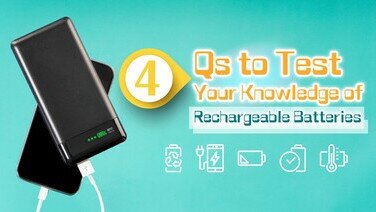Hand washes
"Antibacterial" hand washes – the label could be misleading
Nowadays more and more hand wash products claim to have “antibacterial” properties, and are deemed indispensable during the pandemic. However, do you know that the effectiveness of plain hand washes is not necessarily inferior to that of “antibacterial” ones!
Proper hand-washing practices would be more important
The main purposes of hand washing are to remove dirt and reduce the number of microorganisms on the skin to a safe level. An antibacterial hand wash may not achieve its said effect if the washing process is too brief, as the active ingredients have not been able to stay on the skin long enough to take effect. As we quickly rinse off these products, gone also are their antibacterial effect. As shown by the data from the Centers for Disease Control and Prevention (CDC) of the United States, recent research have indicated that hand wash products containing antibacterial ingredients have not brought additional health benefits to consumers. Some hand wash products on the market do not meet their claimed bactericidal efficacy. The Consumer Council tested 30 models of hand wash products on the market according to the European standard EN276:2009, and found out several of them had less than 35% efficacy in killing Escherichia coli (E. coli). Don't let “hand washing” become a mere ritual! Consumers may want to refer to the article “Several Models of Hand Wash Products Contained Preservatives or Contaminants that Might Induce Allergies. Bactericidal Efficacy Varied Considerably Among Products.” CHOICE Magazine, Issue 513, to find out what constitutes a good antibacterial hand wash product. Instead of the “antibacterial” label, proper hand-washing steps and practices are more crucial in achieving an effective wash.
Traditional hand wash vs foaming hand wash vs soap bar
Apart from its ingredients, the type or form of a hand wash product could also affect the cleaning habits and thus affecting its efficacy in removing bacteria. Some overseas studies have pointed out that as compared with a traditional hand wash, consumers generally take less time to scrub their hands when using a foam one, thus reducing the efficacy in removing bacteria. In recent years, many people have switched to traditional soap bars. But they are relatively difficult to produce rich lather. Therefore, when using soap bars, remember to wet your hands first. Consumers should also pay attention to the hygienic condition of the soap dish after use to ensure that it is dry and free of water. Otherwise, the soap dish could become a breeding ground for bacteria and microorganisms.
Many hand wash products can deliver sufficient antibacterial effect. The key is to adjust our hand-washing habits according to the type of product to ensure that we have sufficient time to rub our hands and to allow the lather to perform its best function. Read on…... and find out more tips about hand washing!
Hand washing triggers dermatitis?
During this COVID-19 pandemic, many people complain about wrinkly hands due to frequent hand washing. Some even suffer from itchy skins and there are a number of causes for that. For example, some people may be allergic to certain ingredients of hand wash products such as preservatives, antibacterial ingredients or fragrance allergens, etc. Consumers who are perfume intolerant or suffer from fragrance sensitivity should avoid products containing cinnamal, citral, citronellol, coumarin, geraniol, hexyl cinnamal, linalool and limonene.
In addition to allergies, improper practices / habits may also defect the purpose of hand washing. Applying excessive hand wash products or washing hands too frequently may strip the natural oils in our skin, causing it to dry out. Washing hands with very hot water may also cause certain damage to the skin. If the skin has cracks or is otherwise compromised, it becomes more difficult to remove pathogenic bacteria and, in some cases, may even lead to infection. Are you really sure that you know how to wash your hands properly?
Hand-washing tips you need to know
The simpler the action, the easier it could be overlooked! Proper hand-washing methods and procedures are more important than choosing the right product, because the incorrect use of hand wash products would not only inhibit their “antibacterial” performance, but might also lead to the above-mentioned counterproductive outcome.
If clean water is not readily available, you can disinfect your hands with a hand sanitizer that has an alcohol content of at least 60%. As long you allow sufficient time and rub your hands (including areas under the nails and between the fingers) thoroughly, you could also achieve a good disinfecting result.
Hand washing has become an essential part of our daily routine now. Consumers should learn the correct procedures without any delay. Now let´s take a look at the demonstration: My Hand Washing Journal – Birthday Episode.
Don't forget to moisturize your hands! Is "glycerin" the magic ingredient?
Over-washing could do harm to your hands, especially if you have dry skin or eczema. Hand washing could wash off the natural oils of the skin, thus destroying its natural barrier. However, if you apply a good moisturizer, you could still keep your hands supple and hydrated.
How to choose among the various hand cream products? Actually, the moisturizing effect is related to the ingredient – "glycerin”. Glycerin is not only a good humectant, but also serves as a skin conditioning agent, which can absorb moisture and transfer it to the outer layer of skin (stratum corneum). It is commonly used in skin care products for the body and hands. Hand cream with glycerinas an important ingredient generally have a good moisturizing effect. However, to achieve a long-lasting moisturizing effect, hand cream should also perform the following critical function in addition to moisture replenishment.
Moisture replenishment and retention work hand in hand
For a long-lasting moisturizing effect, mere hydration is not enough. The reduction of moisture loss is equally important. Hand cream with good moisturizing effect can create a protective film on the skin surface to reduce the transepidermal water loss (TEWL). If the skin's natural barrier is compromised, moisture could escape, thus giving rise to a higher TEWL value.
If the TEWL value drops after using a hand cream, it means that the product is effective in reducing moisture loss from the skin. The Consumer Council tested 13 models of hand cream available in Hong Kong. Some of the products showed a decrease in TEWL value of less than 5% after use, and some of them had significant improvement in reducing water loss. For more details, please refer to the article "A Must-Have For Autumn / Winter! First Ever Consumer Council´s Test – Which Hand Cream Products Represent Good Value For Money?” CHOICE Magazine, Issue 517.
Use hand cream properly to achieve the best result
Our smart consumers know the importance of moisturizing their hands before they become dry! After cleansing your hands and wiping them dry, applying hand cream within the critical window of a few minutes, and gently massage until it is completely absorbed. Remember not to ignore the fingers, fingertips and area between fingers. Overseas studies have estimated that on average, people use 1.7 grams of hand cream each time. However, the actual amount should depend on the skin condition, palm size, humidity, etc. Nowadays, consumers could easily wash their hands several times when they go out, they should consider bringing a small-size hand cream with them, and use it from time to time as necessary!
Disinfectant cards / badges
Do they live up to what their claim?
During this pandemic, various forms of disinfectant lanyards (in the form of cards / badges / pens), etc. have come into the market, claiming that consumers could simply wear them or hang them on backpacks to achieve disinfecting effect. However, this seemingly easy-to-use anti-epidemic "new technology" lacks empirical support in the actual environment. Consumers should be cautious and not overly rely on these products for epidermic protection.
The Consumer Council asked suppliers to provide supporting evidence regarding the claimed functions of the products. Although some suppliers responded, the majority of them were unable to prove that the products could effectively eliminate a particular virus or reduce the virus infectivity within a short period of time. Some products claimed to be able to kill 99.99% of bacteria, but the supporting data submitted by the supplier was lower than its claims. Such findings also indicated a possible violation of the Trade Descriptions Ordinance, (Cap 362).
Is the active ingredient "chlorine dioxide" really useful?
Products generally claimed to emit chlorine dioxide (CIO2) to achieve disinfection effect. To a certain extent, CIO2 does have a disinfection effect, and some countries use it to improve the odor / taste of drinking water or as a bleaching agent in paper processing. In a confined space, high concentration of CIO2 can indeed kill bacteria (or even the notorious bacillus anthracis). However, people must be vacated from the space during this application to avoid associated health risks.
Coming back to these disinfectant lanyards. Although these products may be able to emit CIO2, but in reality, its concentration level is far from sufficient to achieve the said disinfection effect. Furthermore, with the following restrictions, their anti-epidemic effect could be quite doubtful.
Efficacy vanishes when using outdoor? There are numerous space and time constraints
The general public would expect these disinfectant lanyards to provide protection as they stroll down the streets or stay outdoors. But in reality, consumers might be disappointed. The efficacy of these products could be seriously affected by various external environmental factors. Manufacturers usually recommend using these products in less-ventilated or even confined spaces. The efficacy could be further weakened in a windy environment. Some products recommended against exposure to humidity, moisture and direct sunlight, or even outdoor usage. Although many products on the market claimed to have 99.99% disinfection efficacy, click to watch this video to understand the control environments underpinning these experiments.
The experiments were mostly carried out in confined laboratory environments, and over a time frame of 2 to 24 hours+, which was very different from real-life usage. If a product needs such a long time and very confined space to achieve the so-called efficacy, would it really meet your expectation? Don’t be deceived by the “pseudo- science” if you want to get real protection. For further details, please refer to the article“Getting What You Are Paying For? 7 Myths About Disinfectant Badges.” CHOICE Magazine, Issue 525.
Wearable negative ion air purifier
Can air purifiers protect against bacteria?
Putting on a wearable air purifier has become a craze during the COVID-19 pandemic, specially after evidence showing that the virus can transmit through aerosols. However, simply purifying the air cannot prevent nor kill bacteria.
Different models of wearable negative ion air purifiers vary considerably in performance, especially in the PM2.5 test. To read the detailed evaluation report, please refer to the article “Effects of Wearable Negative Ion Air Purifiers Could Be Dubious. Possibility of Triggering Secondary Pollution.” CHOICE Magazine, Issue 527.
What are PM2.5 and CADR?
In addition to bacteria and viruses, various pollutants can also be “intimidating”. Consumers must have heard of PM2.5 which has become “notorious” in recent years. PM2.5 refers to tiny particles with a diameter of 2.5 microns or less. Due to their small size, they are capable of penetrating deep into the human lungs after being inhaled, thus giving rise to health hazards. Therefore, one of the important functions of the air purifier is to remove these small and harmful particles. When choosing an air purifier, consumers should look for its Clean Air Delivery Rate (CADR) for reference, which measures its purifying effectiveness and ability in removing PM2.5.
The air purifying effect can easily be affected by the environment
Nowadays, many air purifiers are very small in size, and can even be worn around neck. However, the effectiveness of these wearable negative ion air purifiers, whether in an indoor or outdoor environment, is doubtful.
When used outdoors, the continuous emissions of pollutants such as exhaust fumes (from vehicles) and cigarette smoke, etc., could reduce the effectiveness of air purifiers. If the user is walking around, the wearable air purifier might not be able to purify the surrounding air in a timely manner. In a windy environment, the negative ions generated by a wearable air purifier might be blown away from the users, thus weakening or eliminating its purifying effect.
When used indoors, such as bus / MTR compartments, shopping malls or offices, pollutants might float towards the users due to air movement. This again would weaken the purifying effect.


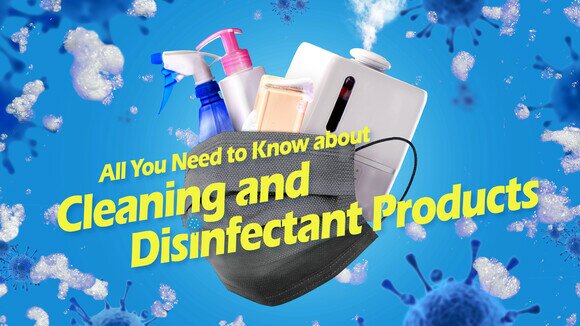



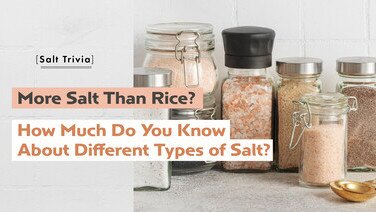
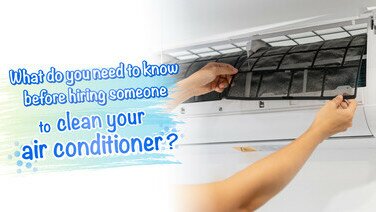
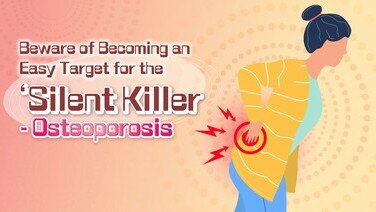
![[Handwashing Cold Knowledge] Debunking 4 common handwashing myths](/f/guide_detail/409326/376c212/43_4%E5%80%8B%E6%B4%97%E6%89%8B%E5%B8%B8%E8%A6%8B%E8%BF%B7%E6%80%9D_Eng.jpg)
